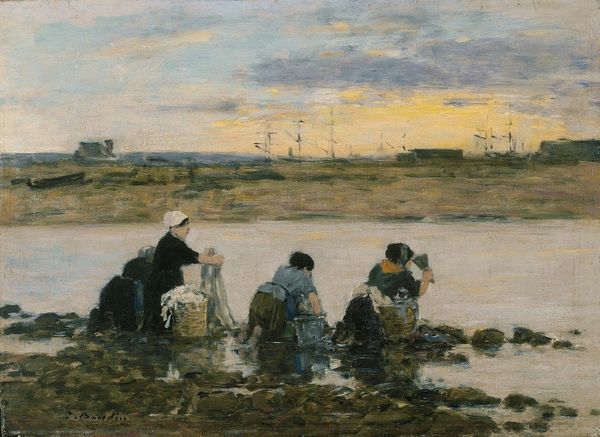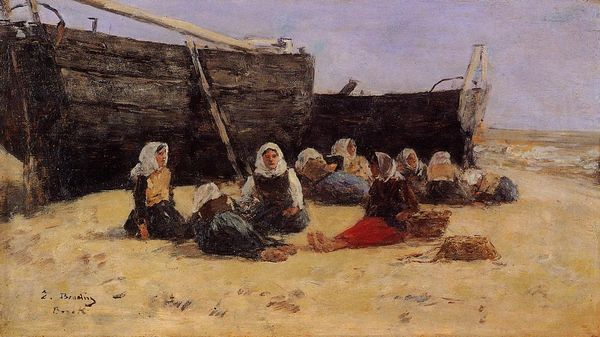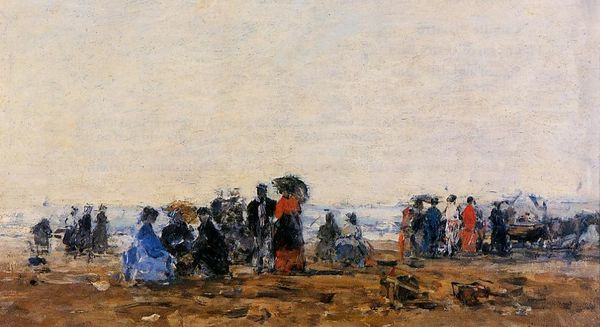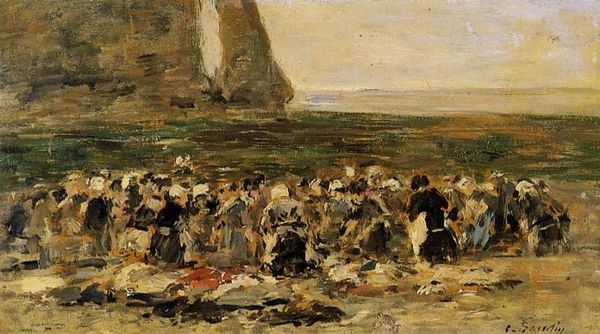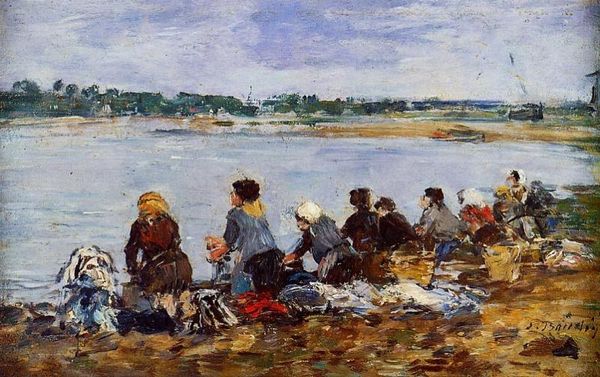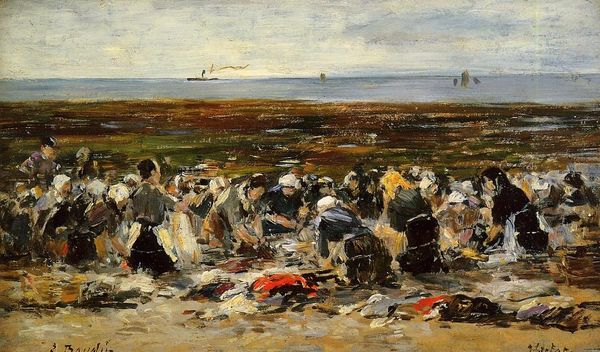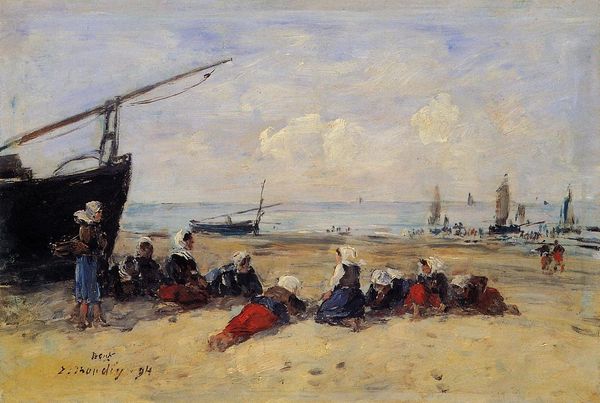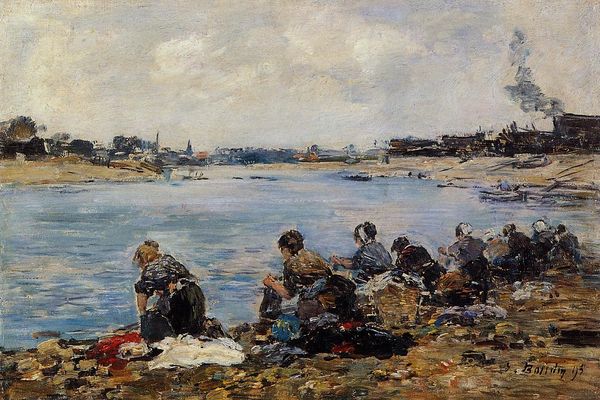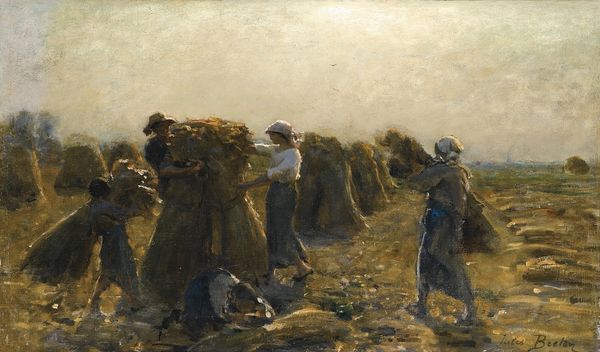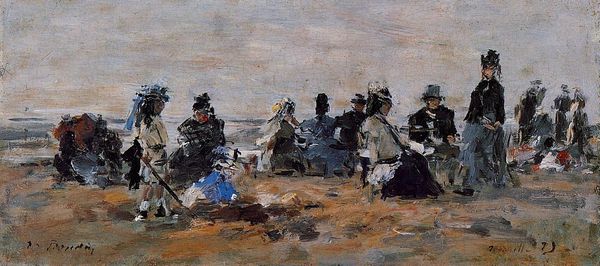
plein-air, oil-paint
#
impressionism
#
plein-air
#
oil-paint
#
landscape
#
impressionist landscape
#
oil painting
#
group-portraits
#
genre-painting
Copyright: Public domain
Editor: So, this is Eugène Boudin’s “The Ferry at Plougastel,” painted in 1872, oil on canvas. It's such a subtle, almost wistful scene. It looks like it’s about daily life on the coast. How do you interpret this work, given its historical context? Curator: This seemingly simple genre scene opens up fascinating avenues for exploration when we consider the socio-economic context of 19th-century Brittany. Boudin, often associated with the Impressionists, provides us with a glimpse into the lives of working-class women in Plougastel. Look at their traditional costumes – the coiffes. What do they tell us about regional identity and cultural preservation in the face of encroaching modernity? Editor: So, their clothing is a statement of identity? Curator: Precisely. Boudin isn't just painting a pretty picture. He’s documenting a specific time and place and subtly commenting on gender roles and economic realities. The women are central to the scene, actively engaged in what looks like the transportation of goods, which tells us about their contribution to the local economy, doesn’t it? How do their positions on the shore inform our understanding of labor? Editor: That's really insightful. I was just seeing the surface of things, the quick brushstrokes and muted palette. I was missing the social commentary. Curator: And that's the beauty of art history. By placing the artwork within its historical and social framework, we uncover deeper meanings and understand whose stories are often missing. Editor: Thank you. I see this painting, and this period of art, completely differently now. Curator: Likewise, your perspective has reminded me of the intimate, lived experience captured within broader historical narratives. It reinforces the value of engaging diverse voices when analysing art.
Comments
No comments
Be the first to comment and join the conversation on the ultimate creative platform.
